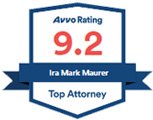Fishkill Injury Attorney Serving Wappingers Falls, Beacon, Lagrangeville, Brewster, Carmel & Nearby Areas Of Hudson Valley
Lead poisoning occurs when lead builds up in the body, often over a period of months or years. Even small amounts of lead can cause serious health problems. Children under the age of 6 are especially vulnerable to lead poisoning, which can severely affect mental and physical development. At very high levels, lead poisoning can be fatal.
Lead-based paint and lead-contaminated dust in older buildings are the most common sources of lead poisoning in children. Other sources include contaminated air, water and soil. Adults who work with batteries, do home renovations or work in auto repair shops also may be exposed to lead.
Initially, lead poisoning can be hard to detect — even people who seem healthy can have high blood levels of lead. Signs and symptoms usually don't appear until dangerous amounts have accumulated.
Symptoms
Lead Poisoning Symptoms in Children May Include:
- Developmental delay
- Learning difficulties
- Irritability
- Loss of appetite
- Weight loss
- Sluggishness and fatigue
- Abdominal pain
- Vomiting
- Constipation
- Hearing loss
Lead Poisoning Symptoms in Newborns May Experience:
- Learning difficulties
- Slowed growth
Lead Poisoning Symptoms in Adults
Although children are primarily at risk, lead poisoning is also dangerous for adults. Signs and symptoms in adults may include:
- High blood pressure
- Abdominal pain
- Constipation
- Joint pains
- Muscle pain
- Declines in mental functioning
- Pain, numbness or tingling of the extremities
- Headache
- Memory loss
- Mood disorders
- Reduced sperm count, abnormal sperm
- Miscarriage or premature birth in pregnant women
Lead is a metal that occurs naturally in the earth's crust, but human activity — mining, burning fossil fuels and manufacturing — has caused it to become more widespread. Lead was also once a key ingredient in paint and gasoline and is still used in batteries, solder, pipes, pottery, roofing materials and some cosmetics.
Lead In Paint
The use of lead-based paints for homes, children's toys and household furniture has been banned in the United States since 1978. But lead-based paint is still on walls and woodwork in many older homes and apartments. Most lead poisoning in children results from eating lead-based paint chips.
Water Pipes And Imported Canned Goods
Lead pipes, brass plumbing fixtures and copper pipes soldered with lead can release lead particles into tap water. Although lead solder in food cans is banned in the United States, it's still used in some countries.
Traditional Remedies
Some cases of lead poisoning have been traced to the use of certain traditional medicines, including:
- Greta or azarcon. This fine orange powder — also known as coral calcium and sea coral — is a Hispanic remedy taken for an upset stomach, constipation, diarrhea and vomiting. It's also used to soothe teething babies.
- Litargirio. Also known as litharge, this peach-colored powder is used as a deodorant, especially in the Dominican Republic.
- Ba-baw-san. This Chinese herbal remedy is used to treat colic pain in babies.
- Ghasard. A brown powder, ghasard is used as a tonic in India.
- Daw tway. A digestive aid used in Thailand, daw tway contains high levels of lead and arsenic.
Other Sources Of Lead Exposure
Lead can also sometimes be found in:
- Soil. Lead particles that settle on the soil from leaded gasoline or paint can last for years. Lead-contaminated soil is still a major problem around highways and in some urban settings. Soil close to walls of older houses may contain lead.
- Water. Copper plumbing soldered with lead is a source of contamination of household drinking water.
- Household dust. Household dust can contain lead from lead paint chips or from contaminated soil brought in from outside.
- Pottery. Glazes found on some ceramics, china and porcelain can contain lead that may leach into food.
- Toys. Lead is sometimes found in toys and other products produced abroad.
- Traditional cosmetics. Kohl is a traditional cosmetic, often used as eyeliner. Testing of various samples of kohl has revealed high levels of lead.
Factors That May Increase Your Risk Of Lead Poisoning Include:
- Age. Infants and young children are more likely to be exposed to lead than are older children. They may chew paint chips, and their hands may be contaminated with lead dust. Young children also absorb lead more easily and sustain more harm from it than do adults and older children.
- Living in an older home. Although the use of lead-based paints has been banned since the 1970s, older homes and buildings often retain remnants of this paint. People renovating an older home are at even higher risk.
- Certain hobbies. Making stained glass requires the use of lead solder. Refinishing old furniture may put you in contact with layers of lead paint.
- Country of origin. People who live in developing countries are at higher risk of lead poisoning because those countries often have less strict rules regarding exposure to lead. American families who adopt a child from another country may want to have the child's blood tested for lead poisoning.
Lead can harm an unborn child, so pregnant women or women likely to become pregnant should be especially careful to avoid exposure to lead.
Tests And Diagnosis:
- Your child's doctor will likely recommend your child be tested for lead levels during routine well child exams. There is some disagreement in the medical community about how often or when a child should be screened for lead levels in their blood. Some experts feel children without any lead poisoning symptoms don't benefit from being tested for lead poisoning.The Centers for Disease Control and Prevention (CDC) recommend doctors and parents follow the recommendations of their state or local health department. Some areas could potentially have a higher lead exposure risk, so certain areas may recommend more frequent testing. If your area doesn't have any specific lead testing recommendations, the American Academy of Pediatrics recommends your child be tested for lead levels at ages 1 and 2. Your doctor may also suggest lead screening if your child is older, but hasn't yet been screened for lead. Doctors usually use a simple blood test to detect lead poisoning. A small blood sample is taken from a finger prick or from a vein. Lead levels in the blood are measured in micrograms per deciliter (mcg/dL). A level of 5 mcg/dL or higher indicates your child may have unsafe levels of lead in their blood and should have their blood tested periodically. If levels become too high — generally 45 mcg/dL or higher — your child should be treated.
Treatment
The first step in treating all degrees of lead poisoning is to remove the source of the contamination. If you can't remove lead from your environment, you may at least be able to reduce the likelihood that it will cause problems. For instance, sometimes it's better to seal in rather than remove old lead paint. Your local health department can recommend ways to identify and reduce lead in your home and community.
For children and adults with relatively low lead levels, simply avoiding exposure to lead may be enough to reduce blood lead levels.
Treating Higher Levels
For more-severe cases, your doctor may recommend:
- Chelation therapy. In this treatment, you take a medication that binds with the lead so that it's excreted in your urine.
- EDTA therapy. Doctors treat adults with lead levels greater than 45 mcg/dL of blood with one or more of three drugs, most commonly a chemical called ethylenediaminetetraacetic acid (EDTA). Depending on your lead level, you may need more than one treatment. In such severe cases, however, it may not be possible to reverse damage that has already occurred.
- Children may need chelation therapy at lower levels than adults do.
If you or a loved one was exposed to lead and developed lead poisoning, please contact premises liability lawyer Ira M. Maurer, Esq. through email, by calling 845-896-5295 , or clicking here to schedule a consultation.





